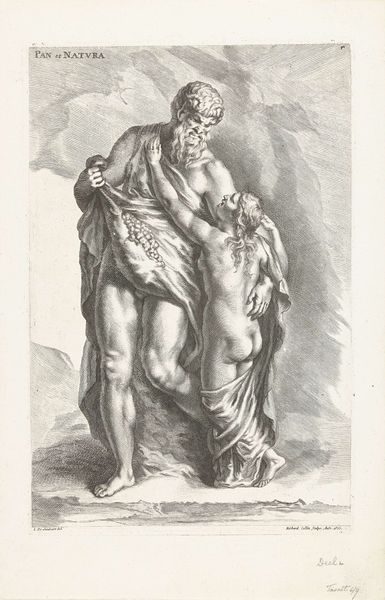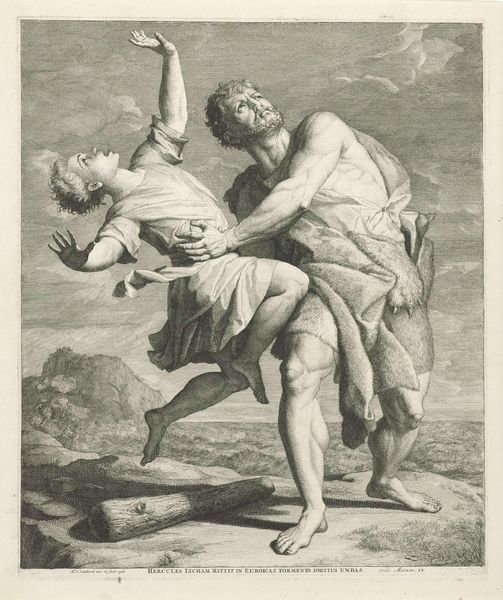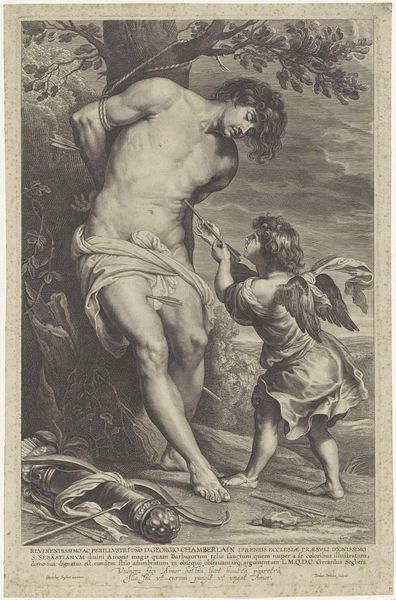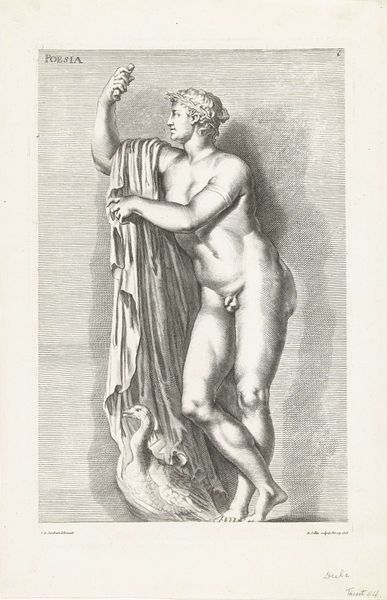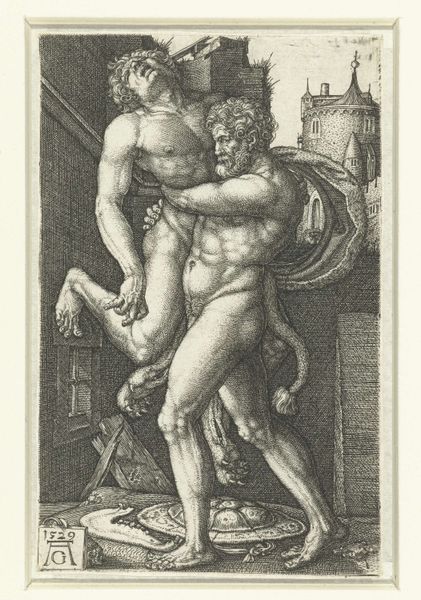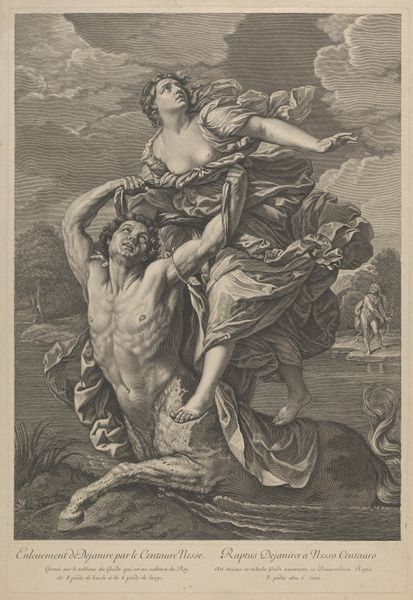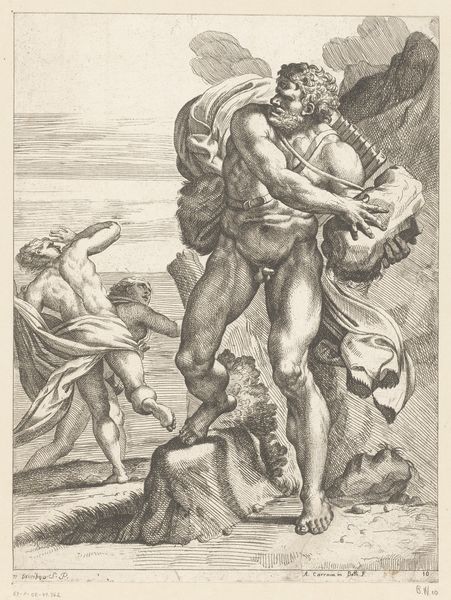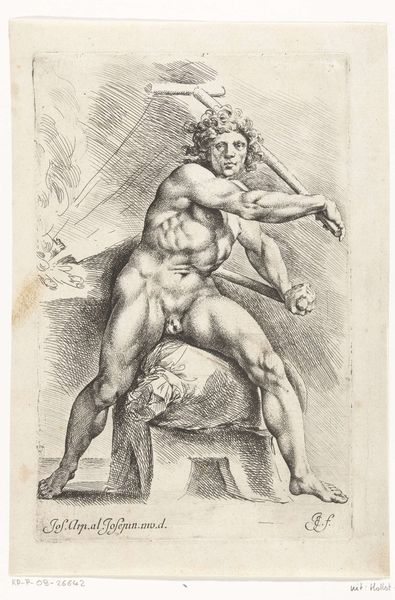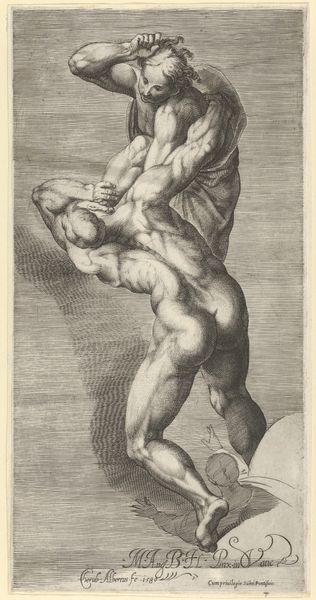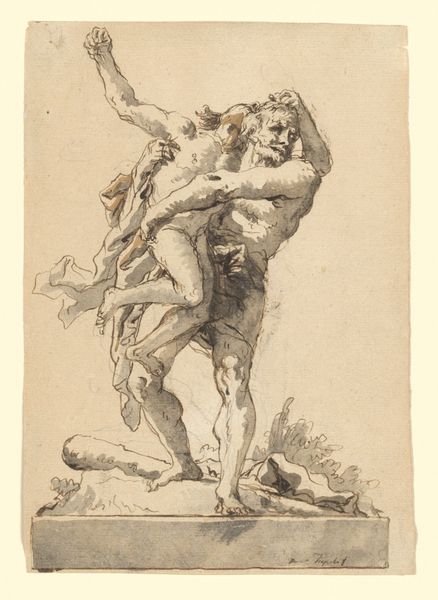
print, engraving
#
allegory
#
baroque
# print
#
old engraving style
#
figuration
#
form
#
history-painting
#
nude
#
engraving
Dimensions: height 175 mm, width 130 mm
Copyright: Rijks Museum: Open Domain
Editor: So, here we have Bernard Picart's engraving, "Standbeeld met de roof van Proserpina," dating from around 1699 to 1733. The dramatic scene feels very... well, Baroque, with all the swirling motion and intense emotion. What do you see in this piece, considering its historical context? Curator: What I see is a visualization of power dynamics that have been consistently excused, even celebrated, in art. This print, based on a marble sculpture, depicts the abduction of Proserpina by Pluto, a foundational myth, yes, but one rooted in violence against women. How does viewing this through a contemporary lens impact your interpretation? Editor: I guess I hadn't thought about it that way, the focus being on the skill of the engraving and the dramatic poses. But it's impossible to ignore the violent act being depicted. It really forces you to question what we consider beautiful or classic, right? Curator: Exactly. And it begs the question of why stories of male dominance and female subjugation are so frequently aestheticized. By engaging with feminist theory, for instance, we can unravel the underlying social power structures reinforced by these artistic representations. Do you think that knowing that this artwork is located at the Rijksmuseum plays a part in this artwork's reception? Editor: Definitely. Museums inherently validate the artwork within their collections. This discussion really highlights how important it is to be critically engaged with even the most celebrated art. Thanks for this insightful context! Curator: My pleasure! Art is always in dialogue with the present, and we must acknowledge that.
Comments
No comments
Be the first to comment and join the conversation on the ultimate creative platform.
